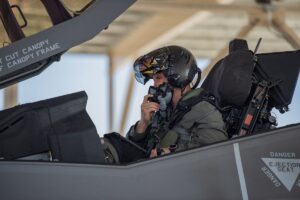
Lockheed Martin [LMT] said on Sept. 16 that it recently demonstrated the ability to link six F-35 Full Mission Simulators (FMS)--four at Marine Corps Air Station (MCAS) Miramar, Calif., and two at Naval Air Station Lemoore, Calif.--to ease the training for pilots of the fifth-generation fighter. "Thanks to the recent installation of Distributed Mission Training (DMT), USMC pilots at MCAS Miramar can connect with U.S. Navy aviators at NAS Lemoore to run joint simulated training exercises in a train as…














